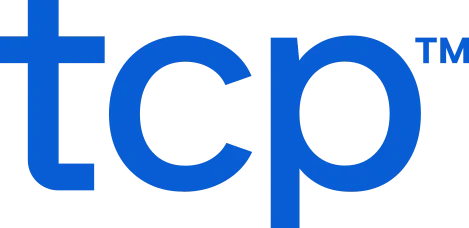Time tracking for labor compliance purposes is like insurance. You hope you never need it to prove anything, but it’s worth its weight in gold if you do.
A system that does more than just capture hours is your best friend. When an audit hits or a wage dispute lands in your inbox, you want something that supports your organization’s labor compliance tracking.
The labor compliance environment is constantly shifting between federal wage rules, state-level break mandates, and union-specific agreements. The only way to keep up is with time tracking systems that reinforce policy in practice.
In this article, we’ll cover:
- The real costs of non-compliance (beyond just fines)
- How time tracking systems can make or break compliance
- Common pitfalls that lead to labor compliance violations
- How time tracking software helps fill in the gaps
- What to look for in compliance-driven time tracking solutions
The consequences of failing to uphold time tracking compliance
Compliance mistakes rarely happen on purpose. But the outcomes are still serious and can impact every facet of your business: legal, operational, financial, and more. Here’s what’s truly at stake with non-compliance:
| Risk Type | What Causes It | What It Leads To |
| Legal Risk | Worker misclassification (e.g., exempt vs. non-exempt, contractor vs. employee) under FLSA timekeeping requirements | FLSA violations, DOL investigations, civil penalties, mandatory reclassification, and back pay settlements |
| Litigation Risk | Missed or undocumented meal/rest breaks | Class action lawsuits, daily penalty payments (e.g., break premiums), particularly common in California |
| Audit Risk | Incomplete, inaccurate, or missing time and payroll records | Failed audits, loss of government contracts or grants, fines, and reputational damage |
| Operational Risk | Using one-size-fits-all policies across multi-state or multi-site workforces | Inconsistent enforcement, accidental non-compliance, difficulty scaling compliance across growing operations |
| Financial Risk | Payroll errors, retroactive pay, settlement costs, consultant/legal fees | Tens to hundreds of thousands in recoverable wages, fines, or legal expenses; budget and margin erosion |
| Reputational Risk | Frequent pay issues, inconsistent policy enforcement, poor break enforcement | Loss of employee trust, low morale, increased turnover, potential union activity, or grievances |
The risk can snowball quickly, whether it’s a missing break log, a misclassified employee, or a manual system that fails to record hours properly.
So what does time tracking have to do with your labor compliance tracking risk?
What are the common time tracking compliance mistakes?
Some of the biggest labor compliance tracking gaps stem from bad processes, not bad behavior. Time tracking that’s handled manually, inconsistently, or without oversight can quietly undermine even the best-run operation.
Here are a few direct time tracking errors that increase labor compliance tracking risk:
- Overtime miscalculations – Employees with multiple roles, departments, or wage rates can trigger unexpected overtime pay errors (and costly compliance gaps) if not tracked properly.
- Mismatch between schedules and actual hours – Approving a schedule doesn’t mean that’s how it plays out in the real world. Deviations need to be captured and reconciled.
- Missed or undocumented breaks – Whether they happened or not, if they’re not logged and visible, they didn’t happen in the eyes of regulators.
- Student and minor labor compliance violations – Strict rules around hours, shift types, and timing further complicate compliance, especially in retail, food service, and seasonal roles.
- CBA and union agreement violations – Collective bargaining agreements (CBAs) often have more stringent scheduling or pay terms than state laws. Failing to track those terms can lead to grievances or legal actions.
If you’re thinking, “trust me, I know this is a lot to keep up with because I deal with it every week,” we hear you. Managing time tracking compliance could be a standalone function in many organizations. But what if it didn’t have to be?
Why time tracking and compliance go hand in hand
Labor compliance doesn’t sit still. The environment is constantly shifting between federal wage rules, state-level break mandates, and union-specific agreements. The only way to keep up is with systems that can do more than document time.
Break tracking
If you’re relying on employees to manually report their breaks, you might already be out of compliance. It’s not enough to say a break was taken — many states require timestamped records that show when and for how long.
Regulators expect to see systems that prompt, track, and flag missed breaks.
Wage calculation
The same idea follows for calculating hours worked for employee wages. Without a verifiable record of hours worked, you can’t prove that non-exempt employees were paid correctly. Wages (without the right time tracking system) can double up as a payroll and compliance issue.
State-based rules
As your organization grows, so does your exposure. A labor law about scheduling in Texas might violate labor compliance in California. If your time tracking solution isn’t built to handle regional nuance, you’re either fixing mistakes manually or flying blind.
Time policy enforcement
You can write a perfect employee handbook, but without systems for enforcing break rules, meal periods, and schedule limits, you’re still exposed.
In the end, policies mean little if your systems can’t support them. That’s why time tracking is central to any serious labor compliance strategy.
Audit readiness
Agencies like the Department of Labor require complete records to meet FLSA timekeeping. Time tracking systems that include audit logs, change histories, and attestations help you prove labor compliance.
How time tracking software helps you stay compliant
With labor compliance, time tracking software might feel like an indirect solution. After all, “compliance” isn’t even in the name, right? But it pushes your organization a step further, addressing the root cause of compliance issues instead of making you play defense.
When done right, time tracking strategy and time tracking compliance are two sides of the same coin. So, time tracking software isn’t a “nice to have.” It’s a trifecta of “must-haves”:
- An insurance policy that serves as a system of record
- The correction for a reactive compliance strategy
- Your hedge against future labor compliance risk
A compliance-driven time tracking solution helps your organization in seven ways.
1. Get real-time alerts for compliance risks
Of course, the most direct impact of labor compliance is catching it as it happens. A time compliance tracking system can flag violations before they become legal issues. The right time tracking system can notify managers if someone misses a break, clocks in too early, or works excessive hours, all before it becomes a bigger problem.
2. Automate recordkeeping and audit trails
When every punch, edit, and override is logged, it means you have complete, traceable records for labor audits, dispute resolution, and internal reviews. All without backtracking and digging through time tracking spreadsheets.
3. Set shift length and overtime thresholds
Configure your software to flag or restrict shifts that exceed allowable limits—whether by state law or union contract.
4. Prevent early and late punches
Use geofencing, time locks, or grace periods to prevent hours from bleeding over into overtime or noncompliant windows.
5. Enforce break and rest rules
Capabilities like automatic lockouts or required attestations help ensure breaks are taken (not just assumed), and schedules align with CBAs and state laws.
6. Track time zone and location accurately
Geolocation and device-based tracking keep mobile teams compliant and reduce issues like time theft or location drift.
7. Monitor and act on exceptions and attestations
When employees go out of bounds on time tracking compliance — missing breaks, unusual schedules, or excessive hours — they can log it, acknowledge it, and create a digital paper trail that protects your records from “I didn’t know” claims.
What should a compliant time tracking solution include?
Time tracking should deliver a complete picture of labor, from the current state of your organization’s compliance down to all the details that make it happen. Here’s what to prioritize if you’re looking for compliance-friendly solution:
- Configurability by state, county, or union rules
- Secure, tamper-proof logs and audit history
- Reporting tools for wage and hour audits
- Seamless integrations with HR, payroll, and legal
- Mobile-friendly tools for field and hybrid teams
- Built-in exception tracking and employee attestations
Compliance is the number one reason manually dependent time tracking systems like spreadsheets fall short. You won’t get alerts. You won’t get audit logs. And you’re one version error away from a major violation.
But if you’re not sure how to build all of this internally (or don’t think you should), that’s where time tracking software can help.
How TCP supports compliance with time tracking software
Our TimeClock Plus platform is built to support organizations that need more than time tracking. With our new Compliance Center, you get in-product access to:
- Guidance on hiring, termination, and disciplinary action
- Legal review of wage rules, non-compete agreements, and employee handbooks
- Templates for time and attendance policies
- Support for ERISA, HIPAA, and ACA compliance
- Access to live training, updates to labor compliance, and HR resources
It’s like having an HR and legal team on demand, without spending six figures on more in-house compliance and legal staff, or scrambling for ad-hoc services.
Next steps: combining time tracking and labor compliance
If you’ve made it this far, it’s because you believe labor compliance isn’t just a line item. It’s a shield that protects your people, your profits, and your reputation. With the right time and attendance tracking software, you can stay ahead of the rules, avoid costly mistakes, and build trust with every hour worked.
Things will always change with your labor compliance. But with TCP at your back, you won’t be scrambling when they do.
TCP Software’s employee scheduling and time and attendance solutions have the flexibility and scalability to suit your business and your employees, now and as you grow.
From TimeClock Plus, which automates even the most complex payroll calculations and leave management requests, to Humanity Schedule for dynamic employee scheduling that saves you time and money, we have everything you need to meet your organization’s needs, no matter how unique. Plus, with Aladtec, we offer 24/7 public safety scheduling solutions for your hometown heroes.
Ready to learn how TCP Software takes the pain out of employee scheduling and time tracking? Speak with an expert today.



